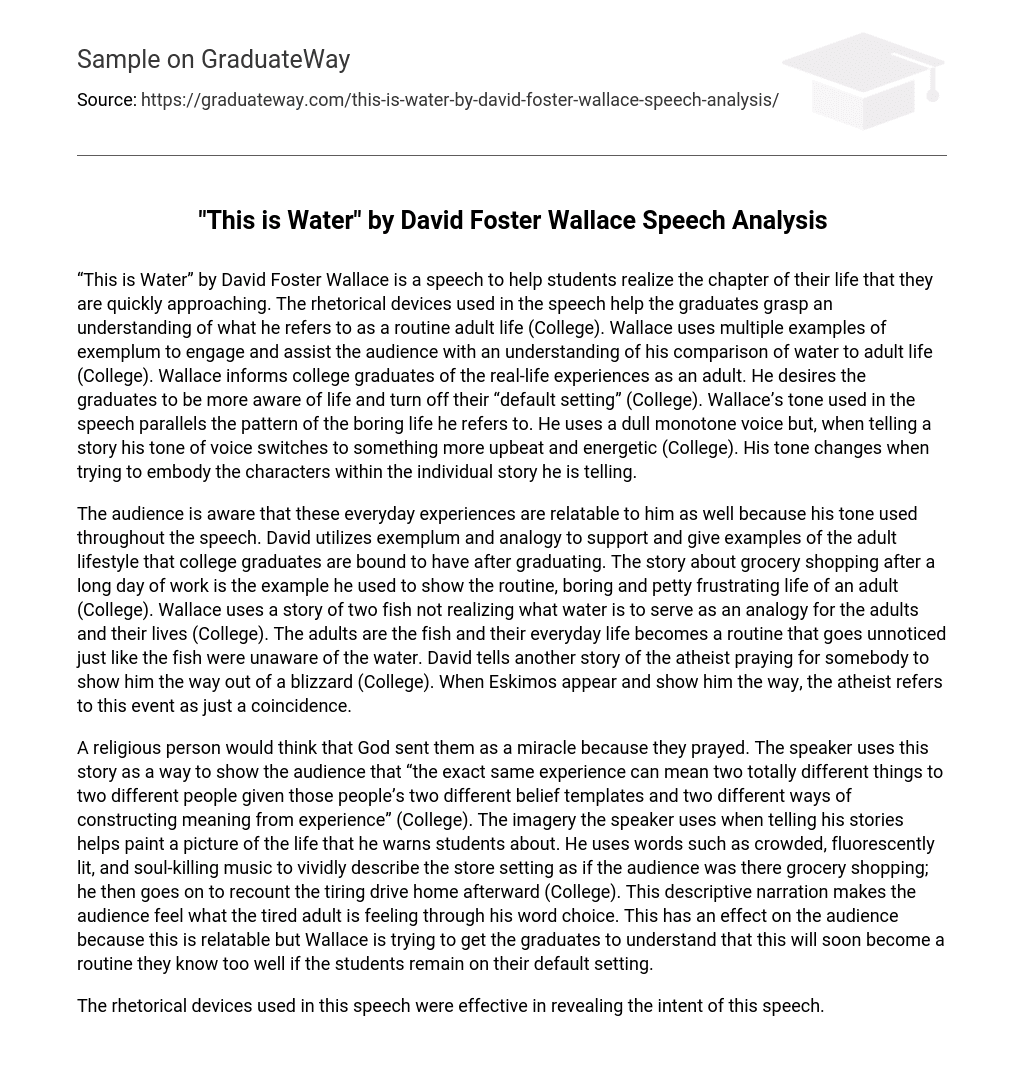“This is Water” by David Foster Wallace is a speech to help students realize the chapter of their life that they are quickly approaching. The rhetorical devices used in the speech help the graduates grasp an understanding of what he refers to as a routine adult life (College). Wallace uses multiple examples of exemplum to engage and assist the audience with an understanding of his comparison of water to adult life (College). Wallace informs college graduates of the real-life experiences as an adult. He desires the graduates to be more aware of life and turn off their “default setting” (College). Wallace’s tone used in the speech parallels the pattern of the boring life he refers to. He uses a dull monotone voice but, when telling a story his tone of voice switches to something more upbeat and energetic (College). His tone changes when trying to embody the characters within the individual story he is telling.
The audience is aware that these everyday experiences are relatable to him as well because his tone used throughout the speech. David utilizes exemplum and analogy to support and give examples of the adult lifestyle that college graduates are bound to have after graduating. The story about grocery shopping after a long day of work is the example he used to show the routine, boring and petty frustrating life of an adult (College). Wallace uses a story of two fish not realizing what water is to serve as an analogy for the adults and their lives (College). The adults are the fish and their everyday life becomes a routine that goes unnoticed just like the fish were unaware of the water. David tells another story of the atheist praying for somebody to show him the way out of a blizzard (College). When Eskimos appear and show him the way, the atheist refers to this event as just a coincidence.
A religious person would think that God sent them as a miracle because they prayed. The speaker uses this story as a way to show the audience that “the exact same experience can mean two totally different things to two different people given those people’s two different belief templates and two different ways of constructing meaning from experience” (College). The imagery the speaker uses when telling his stories helps paint a picture of the life that he warns students about. He uses words such as crowded, fluorescently lit, and soul-killing music to vividly describe the store setting as if the audience was there grocery shopping; he then goes on to recount the tiring drive home afterward (College). This descriptive narration makes the audience feel what the tired adult is feeling through his word choice. This has an effect on the audience because this is relatable but Wallace is trying to get the graduates to understand that this will soon become a routine they know too well if the students remain on their default setting.
The rhetorical devices used in this speech were effective in revealing the intent of this speech. Through his tone, the author reveals the dull life ahead of the students if they contain to focus only on themselves. David uses analogies and stories to give real-life examples of what could happen if the students live their life on the default setting, unaware of their reality. The imagery helps unfold the truth that life is what the graduates make of it. Wallace’s use of these rhetorical devices was effective in acknowledging what the graduates should do with their newfound beginnings.





